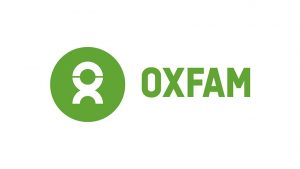India Inequality Report 2021: Oxfam:

The report titled “India Inequality Report 2021: India’s Unequal Healthcare Story” released by Oxfam India shows that the socio-economic inequalities seep into the health sector and disproportionately affect health outcomes of marginalised communities due to the absence of Universal Health Coverage (UHC).
- The report suggested that the states which are attempting to reduce existing inequalities and with higher expenditure on health had lower confirmed cases of Covid-19.
- It provides a comprehensive analysis of the health outcomes across different socioeconomic groups to gauge the level of health inequality that persists in the country.
- The findings are primarily based on secondary analysis from rounds 3 and 4 of the National Family Health Survey and various rounds of the National Sample Survey.
Finding of the Report:
- The general category performs better than SCs and STs; Hindus perform better than Muslims; the rich perform better than the poor; men are better off than women; and the urban population is better off than the rural population on various health indicators.
- The states that have for the past few years been reducing inequalities, such as inequalities to access to health between the general category and SC and ST populations, have less confirmed cases of Covid – such as Telangana, Himachal Pradesh and Rajasthan.
- Kerala invested in infrastructure to create a multi-layered health system, designed to provide first-contact access for basic services at the community level and expanded primary healthcare coverage to achieve access to a range of preventive and curative services.
- Rural-Urban Divide:
- It was highlighted during the second wave of the Covid-19 pandemic, when rural areas witnessed a shortage of tests, oxygen and hospital beds.
- Doctor-person Ratio:
- The National Health Profile in 2017 recorded one government allopathic doctor for every 10,189 people and one state-run hospital for every 90,343 people.
- :Hospital Beds
- The investment in public health infrastructure is so little that the number of beds in the country has actually come down, from 9 beds per 10,000 persons in the 2010 Human Development Report, to only 5 beds per 10,000 persons today.
- India also ranks the lowest in the number of hospital beds per thousand population among the BRICS nations at 0.5. It is lower than lesser developed countries such as Bangladesh (0.87), Chile (2.11) and Mexico (0.98).
- Women Literacy:
- While women’s literacy has improved across social groups over the years, SC and ST women lag behind the general category by 18.6% and 27.9%, respectively.
- There exists a gap of 55.1% between the top and bottom 20% of the population in 2015-16.
- Though the female literacy rate among Muslims (64.3%) is lower than all religious groups, inequality has reduced over time.
- Sanitation:
- As far as sanitation is concerned, 65.7% households have access to improved, non-shared sanitation facilities in the general category while SC households are 28.5% behind them and ST are 39.8% behind them.
- While 93.4% of households in the top 20% have access to improved sanitation, only 6% have access in the bottom 20 % — a difference of 87.4%.
- Immunisation:
- The immunisation in ST households at 55.8% is still 6.2% below the national average, and Muslims have the lowest rate across all socio-religious groups at 55.4%.
- The rate of immunisation of girls continues to be below that of the male child.
- More than 50% of children still do not receive food supplements in the country.
- Life Expectancy:
- Life expectancy based on wealth is 65.1 years for the bottom 20% of the households, while it is 72.7 years for the top 20%.
- Antenatal Care:
- Percentage of mothers who have received full antenatal care declined from 37% in 2005-06 to 21% in 2015-16.
- The share of institutional deliveries in India has increased from 38.7% in 2005-06 to 78.9% in 2015-16.
- Infant Mortality Rate:
- Overall improvement in Infant mortality rate (IMR) is not equal across social groups. Dalits, Adivasis and OBCs have higher IMR as compared to the general category.
- IMR for Adivasis is 44.4 which is 40% more than the general category and 10% more than the national average.




